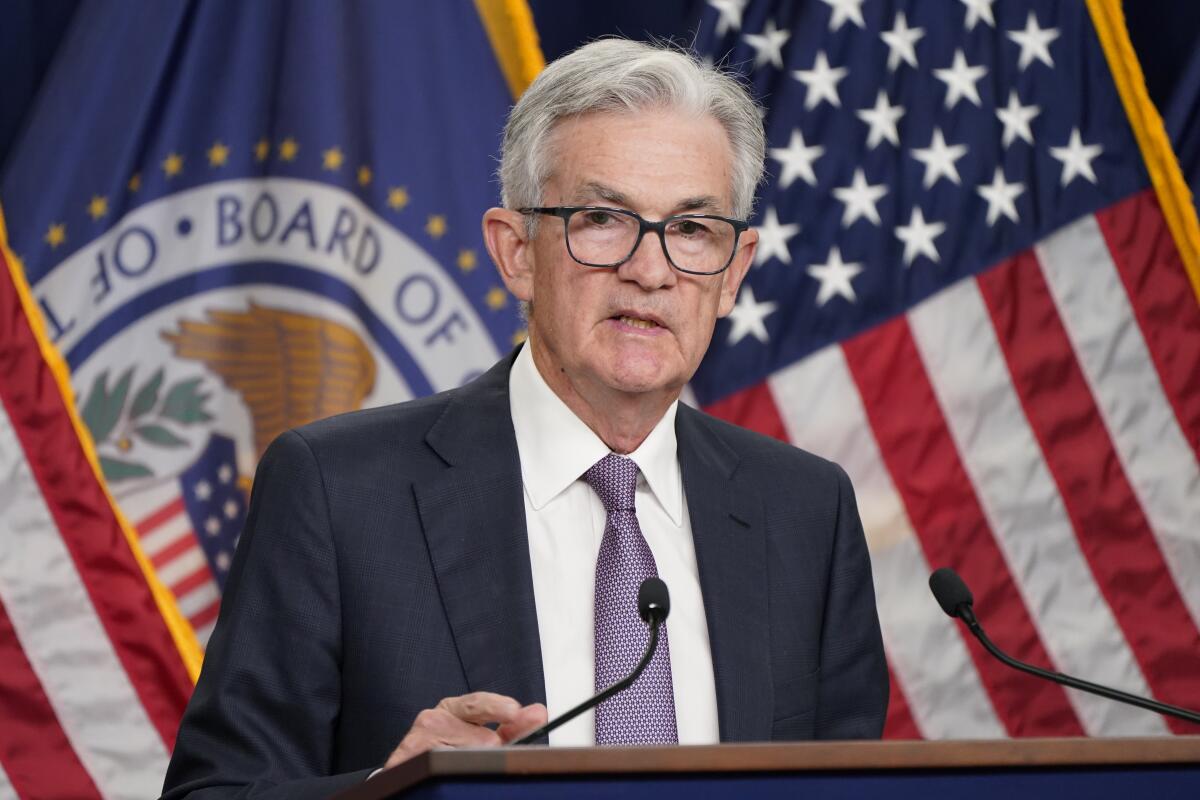Fed officials signal slower pace of interest rate hikes coming ‘soon’

- Share via
Federal Reserve officials at their meeting earlier this month concluded that it would soon be appropriate to slow the pace of interest rate increases, signaling the central bank was leaning toward downshifting to a half-percentage-point hike in December.
“A substantial majority of participants judged that a slowing in the pace of increase would likely soon be appropriate,” minutes from their Nov. 1-2 gathering, released Wednesday in Washington, said.
At the same time, “various” officials concluded that “the ultimate level of the federal funds rate that would be necessary to achieve the committee’s goals was somewhat higher than they had previously expected.”
U.S. stocks and Treasuries rallied while the dollar fell following the report, as investors took a dovish message from the minutes.
At the meeting, officials raised the benchmark rate .75 percentage points for a fourth straight time to a range of 3.75% to 4%, extending the most aggressive tightening campaign since the 1980s to combat inflation at a 40-year high.
Officials discussed the effects of lags in monetary policy and the effects on the economy and inflation, and how soon cumulative tightening would begin to affect spending and hiring. A number of Fed officials said a slower pace of rate increases would allow the central bankers to judge progress on their goals.
“The uncertain lags and magnitudes associated with the effects of monetary policy actions on economic activity and inflation were among the reasons cited regarding why such an assessment was important,” the minutes said.
The Fed said in its policy statement that rates would continue rising to a “sufficiently restrictive” level, while taking account of cumulative tightening and policy lags.
Chair Jerome H. Powell explained in a post-meeting news conference that rates will ultimately go higher than officials expected when they submitted forecasts in September, while signaling the pace of increases would moderate going forward.
Several officials since then have backed downshifting to a half-point increase when they gather next month. Investors see things the same way, while betting that rates will peak around 5% by mid-2023, according to futures contracts.
Powell has a chance to influence those expectations in a speech in Washington scheduled for Nov. 30.
Officials in September saw rates reaching 4.4% by the end of this year and 4.6% in 2023. They will update those quarterly forecasts at their Dec. 13-14 meeting.
Since the November gathering, economic data have shown moderate growth with some signs of slowing inflation amid still strong demand for labor. Employers added 261,000 jobs last month and the unemployment rate rose slightly to 3.7%, though it remains very low on a historic basis.
Financial conditions have also eased since the early November rate increase. Yields on government 10-year notes have declined while U.S. equity markets have advanced.
More to Read
Inside the business of entertainment
The Wide Shot brings you news, analysis and insights on everything from streaming wars to production — and what it all means for the future.
You may occasionally receive promotional content from the Los Angeles Times.










